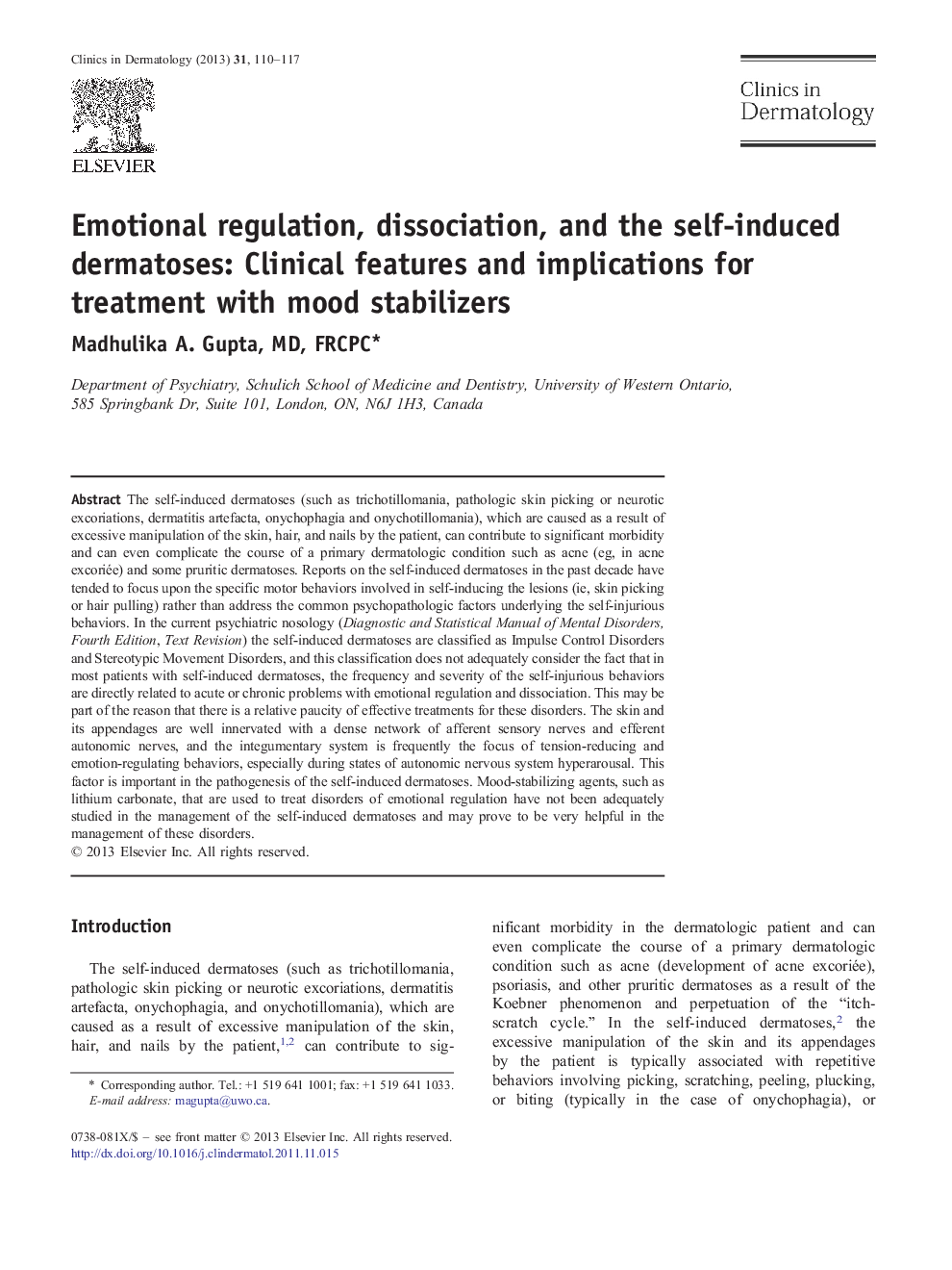| Article ID | Journal | Published Year | Pages | File Type |
|---|---|---|---|---|
| 3194501 | Clinics in Dermatology | 2013 | 8 Pages |
The self-induced dermatoses (such as trichotillomania, pathologic skin picking or neurotic excoriations, dermatitis artefacta, onychophagia and onychotillomania), which are caused as a result of excessive manipulation of the skin, hair, and nails by the patient, can contribute to significant morbidity and can even complicate the course of a primary dermatologic condition such as acne (eg, in acne excoriée) and some pruritic dermatoses. Reports on the self-induced dermatoses in the past decade have tended to focus upon the specific motor behaviors involved in self-inducing the lesions (ie, skin picking or hair pulling) rather than address the common psychopathologic factors underlying the self-injurious behaviors. In the current psychiatric nosology (Diagnostic and Statistical Manual of Mental Disorders, Fourth Edition, Text Revision) the self-induced dermatoses are classified as Impulse Control Disorders and Stereotypic Movement Disorders, and this classification does not adequately consider the fact that in most patients with self-induced dermatoses, the frequency and severity of the self-injurious behaviors are directly related to acute or chronic problems with emotional regulation and dissociation. This may be part of the reason that there is a relative paucity of effective treatments for these disorders. The skin and its appendages are well innervated with a dense network of afferent sensory nerves and efferent autonomic nerves, and the integumentary system is frequently the focus of tension-reducing and emotion-regulating behaviors, especially during states of autonomic nervous system hyperarousal. This factor is important in the pathogenesis of the self-induced dermatoses. Mood-stabilizing agents, such as lithium carbonate, that are used to treat disorders of emotional regulation have not been adequately studied in the management of the self-induced dermatoses and may prove to be very helpful in the management of these disorders.
